
The legend of the Black Madonna has captivated the hearts and minds of many throughout history, shrouded in mystery and reverence. As we embark on the journey of Unveiling the Enigma: Discovering the Whereabouts of the Black Madonna in Spain, we delve into the cultural and spiritual significance of these iconic figures, believed to embody both divine femininity and the rich heritage of the regions they inhabit.
From ancient pilgrimages to contemporary reverence, the Black Madonna holds a special place in the tapestry of Spanish spirituality. This exploration not only seeks to uncover her physical locations but also to understand the profound impact these sacred images have on local communities and their devotion.
The Mysterious Origins of the Black Madonna in Spain
The origins of the Black Madonna in Spain are steeped in mystery and intrigue. Many scholars believe that the cult of the Black Madonna may have its roots in pre-Christian traditions, where ancient goddess figures represented fertility and protection. As Christianity spread, these figures were often assimilated into the new faith, transforming into revered icons that maintained their mysterious aura.
Throughout various regions of Spain, the Black Madonna is associated with a myriad of legends and local practices. Notably, her appearances often coincide with significant historical events, leading to theories regarding her connection to spiritual warfare and protection against adversities. Some key historical contexts include:
- The Reconquista, where she was invoked for divine intervention.
- The pilgrimage routes, which facilitated her worship among diverse communities.
- Local conflicts and crises that solidified her status as a protector.
Archaeological findings suggest that many Black Madonnas were crafted from dark materials, symbolizing earthly qualities and the nurturing aspects of motherhood. This choice of medium may also point to the influence of ancient African and Middle Eastern art forms, indicating a rich tapestry of cultural exchange. The blend of these elements has contributed to the Black Madonna's unique identity within the Spanish context.
Moreover, the veneration of the Black Madonna is often linked to specific rituals that emphasize her role as a mediator between the divine and the earthly realms. These rituals can include:
- Processions during local festivals.
- Offerings made by devotees seeking her blessings.
- Artistic expressions, such as paintings and sculptures, that reflect her cultural significance.
Exploring the Spiritual Significance of the Black Madonna
The spiritual significance of the Black Madonna transcends mere worship; she embodies the essence of divine femininity and serves as a symbol of strength and resilience. Many believers view her as a protector and intercessor, bridging the gap between the human experience and the divine. This dual role enhances her importance within various communities, where she inspires devotion and a sense of belonging.
Within the context of Spanish spirituality, the Black Madonna is often associated with themes of healing and comfort. Her image offers solace in times of distress, encouraging individuals to seek refuge in her presence. This connection is further emphasized through rituals that invite participants to express their hopes and fears, allowing for communal healing and unity. Key aspects of her spiritual significance include:
- Her representation of maternal care and protection.
- The embodiment of cultural identity and heritage.
- The call to pilgrimage, which fosters spiritual growth and reflection.
The Black Madonna also plays a crucial role in the rituals and festivals that celebrate her, often marked by vibrant processions and communal gatherings. These events not only reinforce her spiritual significance but also highlight the communal identity of the regions where she is venerated. Participants often experience a profound sense of connection, both to their heritage and to one another, as they honor her legacy through shared practices.
In addition to her role in community life, the Black Madonna serves as a symbol of resilience in the face of adversity. Her presence has been invoked during historical struggles, such as wars and natural disasters, reflecting her enduring significance as a figure of hope and strength. This connection with resilience has helped to solidify her place in the hearts of devotees, making her a timeless figure of spiritual importance in Spain.
Top Locations to Discover the Black Madonna in Spain
Spain is home to several significant locations where the Black Madonna can be found, each embodying unique cultural and historical narratives. Exploring these sites not only reveals the depth of devotion but also the varied interpretations of her symbolism. Some of the top locations include:
- Montserrat Monastery: Nestled in Catalonia, this site is famous for its stunning views and the revered statue of the Black Madonna, known as La Moreneta.
- Sanctuary of Our Lady of Guadalupe: Located in Extremadura, this sanctuary houses one of the most celebrated Black Madonna figures, pivotal in local religious practices.
- Church of Santa María la Real: In the town of Arcos de la Frontera, this church showcases a captivating Black Madonna that draws many pilgrims each year.
Each of these locations not only serves as a pilgrimage site but also stands as a testament to the rich cultural heritage associated with the Black Madonna. Visitors often engage in rituals that emphasize her protective qualities, making these sites vital centers of faith and community. Some notable events at these locations include:
- Pilgrimages during local festivals, celebrating her role as a protector.
- Art exhibitions featuring local artists inspired by her image and significance.
- Workshops and talks focusing on the cultural history of the Black Madonna in Spain.
In addition to their spiritual significance, these locations often foster a sense of community among devotees. This communal aspect is vital to the experience of worship, as individuals come together to celebrate their shared faith and heritage. The Black Madonna’s presence at these sites acts as a unifying force, reinforcing the bonds among those who revere her.
As you explore these top locations, you’ll find that each offers a unique glimpse into the enduring legacy of the Black Madonna in Spain. Her influence can be seen not only in the art and architecture of these sites but also in the hearts of the communities that cherish her. Whether through personal reflection or shared celebration, the Black Madonna continues to inspire devotion across the country.
The Cultural Impact of the Black Madonna on Spanish Heritage
The cultural impact of the Black Madonna on Spanish heritage is profound, intertwining local traditions, spirituality, and identity. These iconic figures have influenced not only religious practices but also regional art and folklore. As symbols of divine femininity, they represent the nurturing aspects of motherhood while embodying the spiritual resilience of local communities.
Throughout Spain, the Black Madonna has inspired countless artistic expressions, from paintings to sculptures, enriching the cultural landscape. Festivals and rituals surrounding her veneration often feature vibrant displays of local craftsmanship, showcasing the unique interpretations of her image. These artistic endeavors serve to strengthen community bonds, as participants celebrate their shared heritage through creative expression.
The Black Madonna also plays a pivotal role in fostering a sense of belonging among devotees. Her imagery often appears in various cultural events, including local fiestas and pilgrimages, where communities gather to honor her. This collective worship not only reinforces shared beliefs but also creates lasting memories that shape the cultural fabric of each region.
The enduring legacy of the Black Madonna can be seen in the ongoing efforts to preserve her stories and representations. Educational initiatives aimed at exploring her significance often highlight her role as a cultural icon, helping new generations understand the importance of local traditions and the unbroken ties to their ancestors. In this way, the Black Madonna continues to be a vital part of Spain's rich heritage.
Unraveling the Myths Surrounding the Black Madonna's Iconography
The iconography of the Black Madonna is rich with symbolism and cultural significance, often leading to various interpretations and myths. One prevalent myth is the association of her dark complexion with ancient fertility goddesses, reflecting the intertwining of pre-Christian and Christian beliefs. This connection highlights how the Black Madonna serves as a bridge between different cultural narratives, enabling her to resonate with diverse communities across Spain.
Moreover, the dark hue of the Black Madonna has led to theories surrounding her role as a protector against evil. Many believe that her color symbolizes strength and resilience, allowing her to stand as a guardian figure during tumultuous times. This protective aspect is often celebrated in local festivals, where processions and rituals are held to honor her enduring influence in the face of adversity.
In addition, the Black Madonna's iconography often features specific symbols, such as the child Jesus, which reflects her dual role as both a mother and a divine figure. This representation emphasizes the nurturing qualities that many devotees associate with her, as well as her ability to intercede on behalf of those who seek her guidance. Such interpretations enrich the understanding of her significance in various cultural contexts and highlight the layers of meaning embedded in her image.
Finally, the Black Madonna's presence in art and architecture further complicates her iconography. From ancient sculptures to modern interpretations, the variations in her depiction often tell stories of local beliefs and artistic styles. This diversity in representation contributes to ongoing discussions about her identity, illustrating how the Black Madonna continues to inspire and evolve within the cultural heritage of Spain.
The Connection Between the Black Madonna and Spanish Pilgrimage Routes
The connection between the Black Madonna and Spanish pilgrimage routes is profound, as these paths have historically served as conduits of faith and devotion. Pilgrims travel to seek the blessings of the Black Madonna, believing in her protective and healing powers. Important pilgrimage routes include:
- The Camino de Santiago: This iconic route culminates at Santiago de Compostela, where many seekers pay homage to the Black Madonna.
- The Via de la Plata: Stretching from Seville to Santiago, this route highlights the presence of Black Madonna shrines along its path.
- The Camino de la Virgen de la Cabeza: A lesser-known route that draws pilgrims to the sanctuary dedicated to the Black Madonna in Andalusia.
Throughout these journeys, the Black Madonna emerges as a symbol of spiritual guidance, offering solace and strength to those who walk the ancient trails. The traditions associated with these routes often include communal prayers and rituals that reinforce a sense of unity among pilgrims. As they traverse the landscape, devotees partake in various activities meant to honor her, such as:
- Participating in group prayers dedicated to the Black Madonna.
- Carrying her image as a focal point of the pilgrimage.
- Engaging in storytelling traditions that recount her miraculous deeds.
The impact of the Black Madonna on pilgrimage routes extends beyond spirituality; it fosters cultural exchanges and community ties. Each visit to her shrines not only deepens individual faith but also strengthens collective identity. The intertwining of local customs and the reverence for the Black Madonna enhances the significance of these routes as vital intersections of faith and heritage.
Moreover, the festivals celebrated along these pilgrimage routes further illuminate the bond between the Black Madonna and local communities. Events often feature lively processions, music, and art, transforming each pilgrimage into a vibrant celebration of cultural identity. Such gatherings reinforce the Black Madonna's role as a cherished figure of strength, hope, and resilience, making her a central icon in the tapestry of Spanish spirituality.
 Finding the Enigma: The Quest for the World's Largest Ghost Town
Finding the Enigma: The Quest for the World's Largest Ghost Town Girona or Montserrat: Which One Reigns Supreme?
Girona or Montserrat: Which One Reigns Supreme?If you want to know other articles similar to Unveiling the Enigma: Discovering the Whereabouts of the Black Madonna in Spain you can visit the category WHERE YOU CAN GO.
Leave a Reply


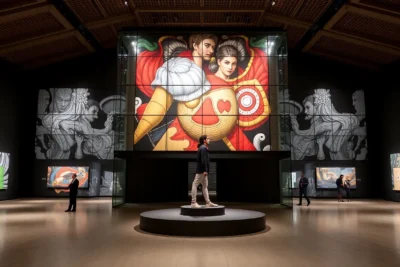
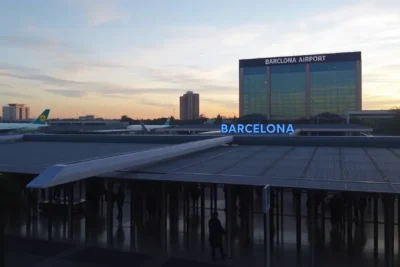

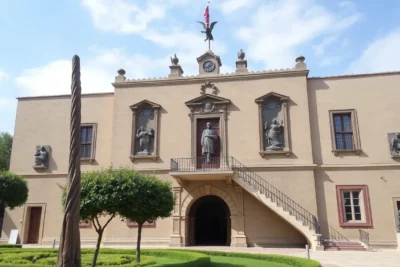
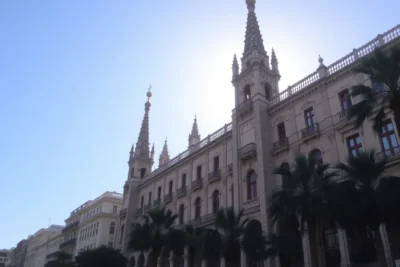

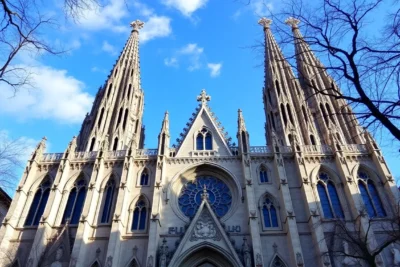

Read more!